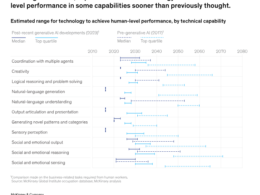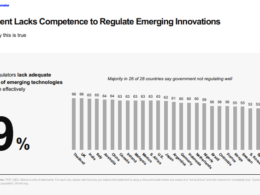tech & health
transformation
knowledge portal
Joaquim Cardoso MSc
March 8, 2024
This summary is based on the article “3 Generative AI Blind Spots Health Execs Need to Recognize”, published by The American Hospital Association.
What is the message?
As the healthcare sector embraces generative artificial intelligence (AI) for various applications, including administrative streamlining and personalized patient care, executives must address blind spots to ensure successful integration.
Despite concerns about data accuracy, accountability, and biases, health leaders must prioritize governance, consumer trust, and workforce needs to maximize AI’s potential benefits.

ONE PAGE SUMMARY
What are the key points?
- Potential Blind Spots Identified: A Deloitte report reveals that while 70% of surveyed healthcare executives prioritize data considerations during AI implementation, significant blind spots exist. These include ineffective governance implementation, lack of focus on building consumer trust, and insufficient investment in workforce needs.
- Governance Model Importance: Establishing an effective governance model is crucial for ensuring data quality, mitigating biases, and safeguarding patient privacy. However, only 60% of executives prioritize creating a data governance model, and 45% focus on mitigating data biases.
- Building Consumer Trust: Despite consumer demand for transparency and understanding of AI usage, only half of executives prioritize building consumer trust and educating consumers about AI risks. Engaging consumers transparently and iteratively can foster trust and enhance technology adoption.
- Addressing Workforce Needs: While early adopters recognize the value of AI in upskilling and reskilling employees, less than two-thirds of executives focus on workforce upskilling, addressing worker concerns, and change management. Prioritizing workforce integration and literacy is crucial for successful AI adoption.
What are the key statistics?
70% of healthcare executives prioritize data considerations during AI implementation.
Less than 60% of executives focus on creating a data governance model, mitigating data biases, building consumer trust, and addressing workforce needs.
Only 45% of executives prioritize educating consumers about AI risks.
What are the key examples?
Lack of emphasis on governance and consumer trust may lead to decreased engagement and trust levels in AI technology among consumers.
Insufficient investment in workforce needs may hinder employee buy-in and adoption of AI solutions within healthcare organizations.
Conclusion
To successfully integrate generative AI into healthcare workflows, executives must address blind spots in governance, consumer trust, and workforce needs.
By establishing effective governance models, engaging consumers transparently, and prioritizing workforce upskilling, healthcare organizations can maximize the benefits of AI while mitigating risks and fostering trust among stakeholders.
Recognizing and addressing these blind spots are essential steps towards realizing the full potential of AI in improving healthcare delivery and patient outcomes.
To read the original publication, click here.











